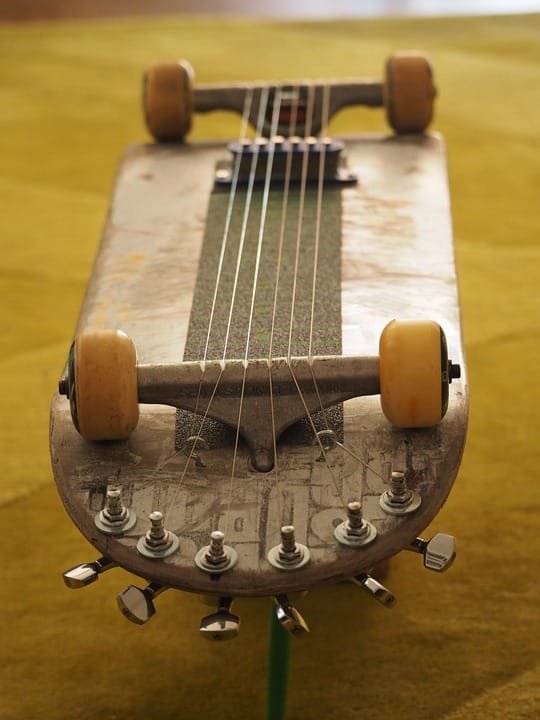From Fast to Last: How to Build a Sustainable Wardrobe from Scratch
As I stood in front of my overflowing closet, filled with clothes that once brought me joy, I realized I’d lost sight of the purpose behind my wardrobe. The all-consuming nature of fast fashion had taken over, and I was contributing to the staggering environmental and social issues it posed. In this journey, I’ve discovered a new path, one that celebrates sustainability, creativity, and self-expression. Join me as I explore the world of sustainable fashion and share practical tips on how to build a wardrobe that’s as kind to the planet as it is to your wallet.
The Dark Side of Fast Fashion
Fast fashion’s impact on the environment is staggering. The average American generates about 82 pounds of textile waste each year (1). At the manufacturing stage, environmental damage is significant: water pollution, energy consumption, and toxic waste (2). The social implications are equally concerning: labor exploitation, poor working conditions, and theemic rise of the ‘disposable’ clothing culture. It’s time to acknowledge the dark side of fast fashion and take a more mindful approach.
Eco-Friendly Materials and Responsible Practices
As I began my journey, I discovered the importance of eco-friendly materials and responsible practices. Organic cotton, recycled polyester, and Tencel are just a few sustainable options to consider. Look for certifications like GOTS (Global Organic Textile Standard), Oeko-Tex, or the Better Cotton Initiative (BCI). These labels ensure the production process prioritizes the environment, workers, and quality.
Slow Fashion and Second-Hand Shopping
I’ve found solace in the world of slow fashion, where quality over quantity is the guiding principle. Swedish fashion brand H&M’s Conscious Collection is a great example, offering sustainable and recycled materials. Thrift shopping has also become a go-to destination, with the promise of hidden gems and the satisfaction of giving old clothes a new life. Local charities, online platforms, and swap meets are all great resources to explore.
Upcycling and Creative Renovations
Upcycling is another way to breathe new life into old clothes. I’ve transformed old t-shirts into reusable bags, turned vintage scarves into jewelry, and even created customized patches from discarded fabric. The possibilities are endless, and you can find inspiration online or spark your own creativity by repurposing fabric scraps and patches.
Maintaining Your Clothes for a Longer Life
To extend the life of your wardrobe, prioritize care and maintenance. Hand-wash delicate items, avoid overloading the washing machine, and consider dry cleaning or steaming for delicate fabrics. Regularly inspect and repair clothes, and don’t be afraid to repurpose or upcycle.
Sustainable Swap-Out: Tips for a More Conscious Wardrobe
- Assess your closet: Take an inventory of your current wardrobe and determine what you wear regularly. Consider donating, swapping, or upcycling items that no longer bring you joy.
- Streamline your purchases: Adopt a slower, more intentional approach to buying. Research brands, materials, and production processes before making a purchase.
- Explore second-hand shopping: Visit local thrift stores, charity shops, or online platforms to find unique, sustainable pieces.
- Invest in quality over quantity: Choose high-quality, timeless items that will withstand the test of time, reducing the need for frequent replacements.
- Get creative with upcycling: Find inspiration online or repurpose fabric scraps to breathe new life into old clothes.
Conclusion
Joining the world of sustainable fashion has awakened a sense of responsibility and purpose. By embracing eco-friendly materials, slow fashion, and creative upcycling, we can make a positive impact on the environment and our communities. Remember, sustainable fashion is not just a trend – it’s a commitment to conscious living and self-expression. Start your journey today and discover the joy of building a wardrobe that’s as Lasting as it is beautiful.
Frequently Asked Questions (FAQs)
Q: How do I avoid environmental impact when shopping online?
A: Look for brands with sustainable practices, GOTS or Oeko-Tex certifications, and consider second-hand online stores.
Q: What materials are the most eco-friendly for clothing?
A: Organic cotton, recycled polyester, Tencel, and natural fibers like hemp, bamboo, and flax are great options.
Q: How can I extend the life of my clothes?
A: Regular maintenance, hand-washing, and avoiding overloading the washing machine can help. Consider dry cleaning or steaming for delicate fabrics.
Q: Where can I find sustainable fashion brands?
A: Research online, explore local markets, and visit sustainable fashion websites like Patagonia, Reformation, and People Tree.
By adopting these simple yet powerful principles, you too can join the movement towards a more sustainable and conscious wardrobe. Remember, every small step towards change counts, and together, we can make a significant impact.
References:
(1) [Source: United States Environmental Protection Agency (EPA)]
(2) [Source: The Guardian’s Fashion Industry’s Pollution]








Leave a Reply